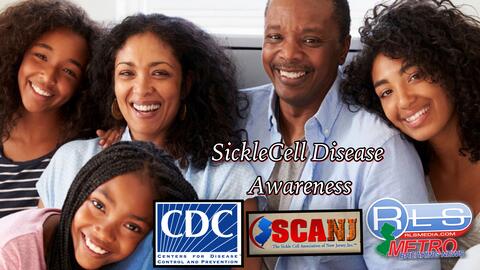According to the Center for Disease Control, Sickle Cell Disease is a group of inherited red blood cell disorders.
Center for Disease Control officials say healthy red blood cells are round, and they move through small blood vessels to carry oxygen to all parts of the body.
In someone who has SCD, the red blood cells become hard and sticky and look like a C-shaped farm tool called a “sickle.”
The sickle cells die early, which causes a constant shortage of red blood cells. Also, when they travel through small blood vessels, they get stuck and clog the blood flow.
Officials say this can cause pain and other serious problems such as infection, acute chest syndrome and stroke according to the Center for Disease Control.
**Anemia**
Anemia is a very common complication of SCD. With SCD, the red blood cells die early. This means there are not enough healthy red blood cells to carry oxygen throughout the body. When this happens, a person might have:
Tiredness
Irritability
Dizziness and lightheadedness
A fast heart rate
Difficulty breathing
Pale skin color
Jaundice (yellow color to the skin and whites of the eyes)
Slow growth
Delayed puberty
Treatment
Blood transfusions are used to treat severe anemia. A sudden worsening of anemia resulting from infection or enlargement of the spleen is a common reason for a transfusion.
Multiple blood transfusions, however, might cause health problems because of the iron content of blood. Iron overload, called hemosiderosis, can damage liver, heart, pancreas and other organs, leading to diseases such as diabetes mellitus.
Iron chelation therapy should be started in patients with SCD receiving regular blood transfusions to reduce excess iron levels.
Click **[HERE](https://www.cdc.gov/ncbddd/sicklecell/treatments.html)** for more information from the Center for Disease Control on Sickle Cell Disease. Click **[HERE](https://www.sicklecellnewjersey.org/ )** for The Sickle Cell Association of New Jersey.
**IMAGE/INFORMATION/VIDEO CREDIT:**: Center for Disease Control (CDC)
